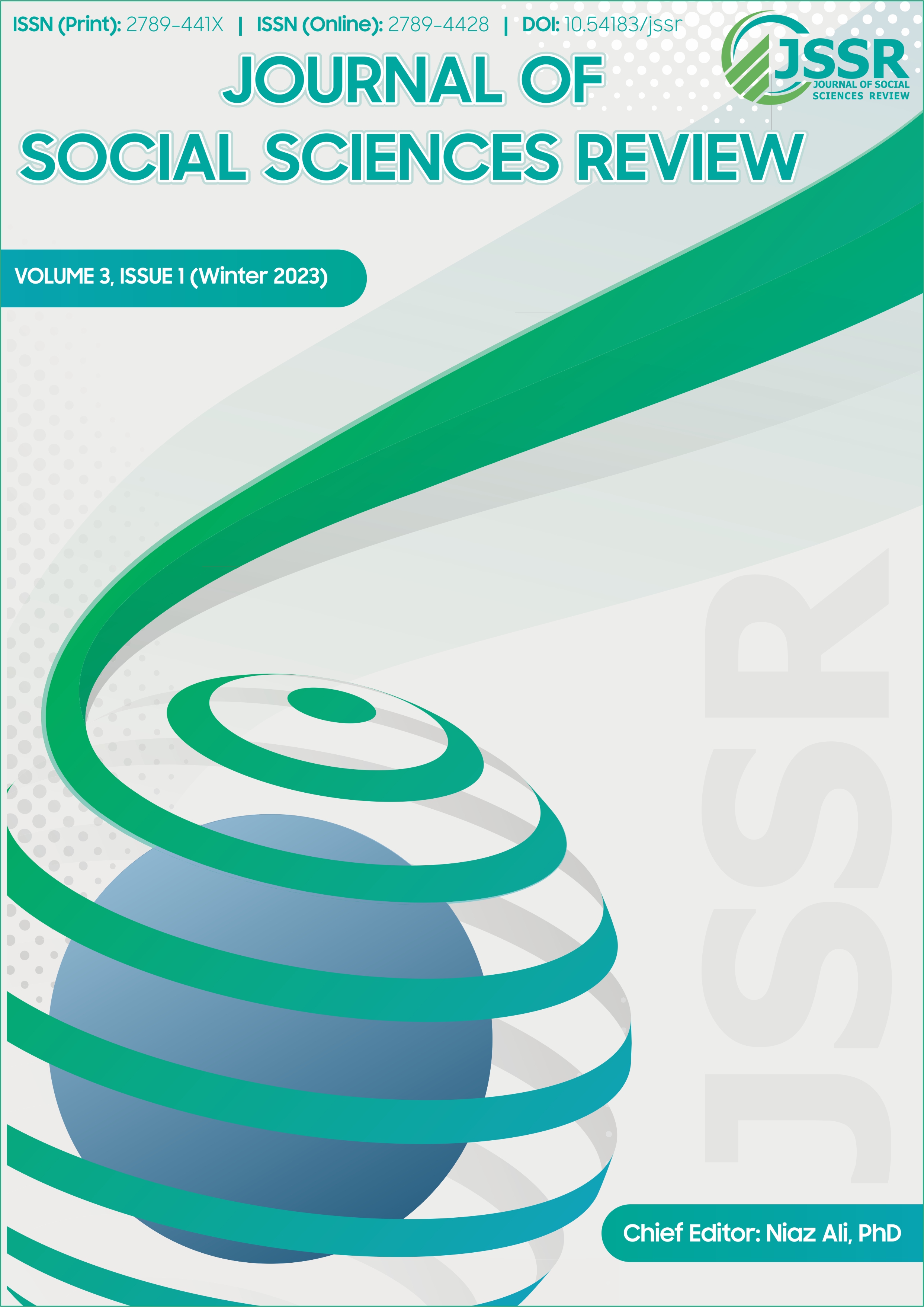Collective Requirements of the Students in Large Multilevel Intermediate English Classes: A Quantitative Study
DOI:
https://doi.org/10.54183/jssr.v3i1.172Keywords:
Collective Requirements, Students, Large Classes, Multilevel StudentsAbstract
Large classes are, by definition, diverse and multilevel, indicating differences among the students, including their aptitude for learning a language, traditional background, styles of learning, age, language attitude, domestic language, cultural experiences, motivational level, etc. Therefore, the study aimed to investigate the collective requirements of the students in large multilevel intermediate English classes. The percentage of the students’ responses was analyzed in the study, so the study was exploration-type. All the intermediate students of the Government Post Graduate College Okara were the population of the study. The purposive non-random sampling procedure was adopted to select the sample from the population. The data was collected from the 120 intermediate levels English students of the College. The results of the study showed that the percentage, greater in number, of the large multilevel students who wanted classroom management, collaboration, range of tasks, feedback, English language environment in the classroom, and home assignments. It was recommended that the govt. Should facilitate the instructional process keeping in mind the collective requirements of the large multilevel students.
References
Aldrup, K., Klusmann, U., Lüdtke, O., Göllner, R., & Trautwein, U. (2018). Social support and classroom management are related to secondary students’ general school adjustment: A multilevel structural equation model using student and teacher ratings. Journal of Educational Psychology, 110(8), 1066–1083. https://doi.org/10.1037/edu0000256
Barrett, P., Davies, F., Zhang, Y., & Barrett, L. (2015). Undefined. Building and Environment, 89, 118-133. https://doi.org/10.1016/j.buildenv.2015.02.013
Burić, I., & Kim, L. E. (2020). Teacher self-efficacy, instructional quality, and student motivational beliefs: An analysis using multilevel structural equation modeling. Learning and Instruction, 66, 101302. https://doi.org/10.1016/j.learninstruc.2019.101302
Corlett, M. J. (2022). Exploring the potential of Te Whāriki in supporting a decolonizing educational reform in a classroom (Doctoral dissertation, The University of Waikato).
Harmer, J. (2008). The practice of English language teaching. Longman: Pearson Longman.
Hoang, V. Q. (2021). The Differences of Individual Learners in Second Language Acquisition. International Journal of TESOL & Education, 1(1), 38–46. Retrieved from https://i-jte.org/index.php/journal/article/view/6
Hospel, V., & Galand, B. (2016). Are both classroom autonomy support and structure equally important for students' engagement? A multilevel analysis. Learning and Instruction, 41, 1-10. https://doi.org/10.1016/j.learninstruc.2015.09.001
Hu, X., Gong, Y., Lai, C., & Leung, F. K. (2018). The relationship between ICT and student literacy in mathematics, reading, and science across 44 countries: A multilevel analysis. Computers & Education, 125, 1-13. https://doi.org/10.1016/j.compedu.2018.05.021
Keller, M. M., Neumann, K., & Fischer, H. E. (2016). The impact of physics teachers’ pedagogical content knowledge and motivation on students’ achievement and interest. Journal of Research in Science Teaching, 54(5), 586-614. https://doi.org/10.1002/tea.21378
Khati, A. R. (1970). Exploring common expectations from students in large multilevel secondary level English classes. Journal of NELTA, 15(1-2), 98-105. https://doi.org/10.3126/nelta.v15i1-2.4614
Låftman, S. B., Östberg, V., & Modin, B. (2016). School climate and exposure to bullying: A multilevel study. School Effectiveness and School Improvement, 28(1), 153-164. https://doi.org/10.1080/09243453.2016.1253591
Reis, S. M., & Renzulli, J. S. (2018). The Five Dimensions of Differentiation. International Journal for Talent Development and Creativity, 6, 87-94.
Upadhaya, M. (2000). Teaching English in large classes. Journal of NELTA, 5 (2) 67-70.
Ur, P. (2005). A course in language teaching: theory and practice. Cambridge: CUP.
William, M. & Burden, R. L. (1997). Psychology for language teachers: A social constructivist approach. London: CUP.
Wilson, D., Jones, D., Bocell, F., Crawford, J., Kim, M. J., Veilleux, N., Floyd-Smith, T., Bates, R., & Plett, M. (2015). Belonging and academic engagement among undergraduate STEM students: A multi-institutional study. Research in Higher Education, 56(7), 750-776. https://doi.org/10.1007/s11162-015-9367-x
Winitzky-Stephens, J. R., & Pickavance, J. (2017). Open educational resources and student course outcomes: A multilevel analysis. The International Review of Research in Open and Distributed Learning, 18(4). https://doi.org/10.19173/irrodl.v18i4.3118
Downloads
Published
Issue
Section
License
Copyright (c) 2023 Copyright in the Journal of Social Sciences Review is retained by the author(s). Authors also grant any third party the right to use the article freely as long as its integrity is maintained and its original authors, citation details and publisher are identified.

This work is licensed under a Creative Commons Attribution-NonCommercial 4.0 International License.
SSR's Editorial Board shares the vision of providing free access to information, education, and science for everyone, thus promoting its content through an OPEN ACCESS POLICY, fulfilling the DOAJ definition of open access. The JSSR adheres to an Open Access and Copyright Licensing Policy based on the belief that making research freely accessible to the public promotes greater global knowledge sharing.
The JSSR uses the Creative Commons Attribution-NonCommercial 4.0 International License. The authors who apply and publish in JSSR consent to abide by the copyright policy set out in the Creative Commons 4.0 license (Attribution-NonCommercial 4.0 International license).
- Copyright in the Journal of Social Sciences Review is retained by the author(s).
- Authors also grant any third party the right to use the article freely as long as its integrity is maintained and its original authors, citation details and publisher are identified.
While "By 'open access' to this literature, we mean its free availability on the public internet, permitting any users to read, download, copy, distribute, print, search, or link to the full texts of these articles, crawl them for indexing, pass them as data to software, or use them for any other lawful purpose, without financial, legal, or technical barriers other than those inseparable from gaining access to the internet itself."



